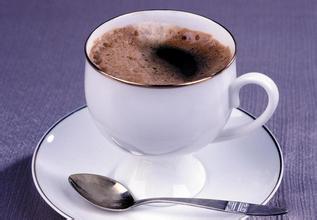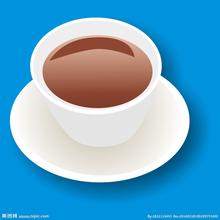The ratio of hand-brewed coffee powder to water-how to drink coffee powder
The ratio of hand-brewed coffee powder to water-how to drink coffee powder
Step 1: grind beans, because it is the first time not to grind too many beans 15g (the thickness should be close to the thickness of fine sugar) PS: grind beans while boiling water.
Step 2: put the filter cup sharing pot in place and fold the filter paper.
Step 3: the water should be boiled, wet the filter paper, and heat the sharing pot and hand punch by the way.
Step 4: pour 15g coffee powder into a filter cup filled with filter paper, measure the temperature of boiling water with a thermometer (as you don't know what water temperature is suitable for Brazilian coffee beans you buy, use the 85 degrees recommended by Tieba seniors), pour water gently from the spout of coffee powder 1-2CM, and the center begins to rotate clockwise until the water is just ready to drown the coffee powder for a period of time (I don't know. 2-4 minutes? )
If you know the amount of coffee powder, times the coefficient 16, you know how many ounces of water you need (0.0625 is the inverse coefficient), multiplied by the coefficient 16.6945, you get how many milliliters of water you need (0.04493 is the inverse coefficient).
For example, if you have 1.2oz coffee powder multiplied by 16.0, you need 19.2oz water; 92.6g coffee powder requires 1562CCs (1.56L) water. The amount of coffee powder required can be obtained by multiplying the inverse coefficient with the known amount of water.
Comparing the two tables, it is not difficult to find that the so-called brewing of enthusiasts is just a little higher in concentration and heavier in taste.
To put it simply, under normal circumstances, one serving of powder (10 grams) is washed into about 22 parts (220 grams) of water, while enthusiasts use one part of powder (10 grams) to flush about 160,17 parts of water (160,170g water).
The picture below is the coffee brewing rate chart of SCAA. If you have the TDS gadget and find that the value of coffee is within the yellow box in the middle of the table below, the coffee wine is relatively balanced and delicious. In this table, the Abscissa is the coffee extraction rate, that is, the ratio of the coffee ingredients extracted from the coffee beans (powder) to the coffee beans (portions). The ordinate represents the ratio of the extracted coffee ingredients (special hint: this is not the weight of the coffee powder) to the total coffee liquid, also known as concentration. The conclusion of SCAA's long-term observation and research is that when the extraction rate of coffee is 180.22% and the concentration is 1.15 ~ 1.35% (that is, the range of yellow box), the taste of coffee is the best (balanced and delicious).

Important Notice :
前街咖啡 FrontStreet Coffee has moved to new addredd:
FrontStreet Coffee Address: 315,Donghua East Road,GuangZhou
Tel:020 38364473
- Prev

How to use the coffee machine-American coffee machine
Coffee grinder-American coffee machine using the method of grinding coffee beans tips coffee beans grinding props is the mill. Grinders range from manual for home use to large electric for business use. Household grinders can also be used as decorations, and if the number of people wants to grind once, it is still convenient to use electric grinders. Classified by the structure of the mill There is the use of vertical and horizontal groove edge cut coffee
- Next

Coffee shop managers and human resources policy
Coffee shop managers and human resources policy 1. How to use part-time staff flexibly. two。 The support system for the relevant logistics departments should be established. 3. The preparation time for formal service personnel should be used effectively. 4. The guidance of the official moderators must be strengthened. The second is to pay attention to the improvement of the working environment, in the assignment of work tasks, should pay attention to the following points. 1. This job should be done by
Related
- What brand of black coffee is the most authentic and delicious? what are the characteristics of the flavor of the authentic Rose Summer Black Coffee?
- Introduction to the principle and characteristics of the correct use of mocha pot A detailed course of mocha pot brewing coffee is described in five steps.
- Which is better, decaf or regular coffee? how is decaf made?
- How much is a bag of four cat coffee?
- How about four Cat Coffee or Nestle Coffee? why is it a cheap scam?
- Which is better, Yunnan four Cats Coffee or Nestle Coffee? How about cat coffee? is it a fake scam? why is it so cheap?
- How about Cat Coffee? what grade is a hoax? which instant coffee tastes better, four Cat Coffee, Nestle Coffee or G7 coffee?
- Process flow chart of coffee making-Starbucks coffee making process what coffee tastes good at Starbucks
- The top ten best coffee beans in the world Rose summer coffee or Tanzanian coffee tastes good
- Yunnan four cat coffee is good to drink?_four cat coffee is a big brand? four cat blue mountain coffee is fake?

